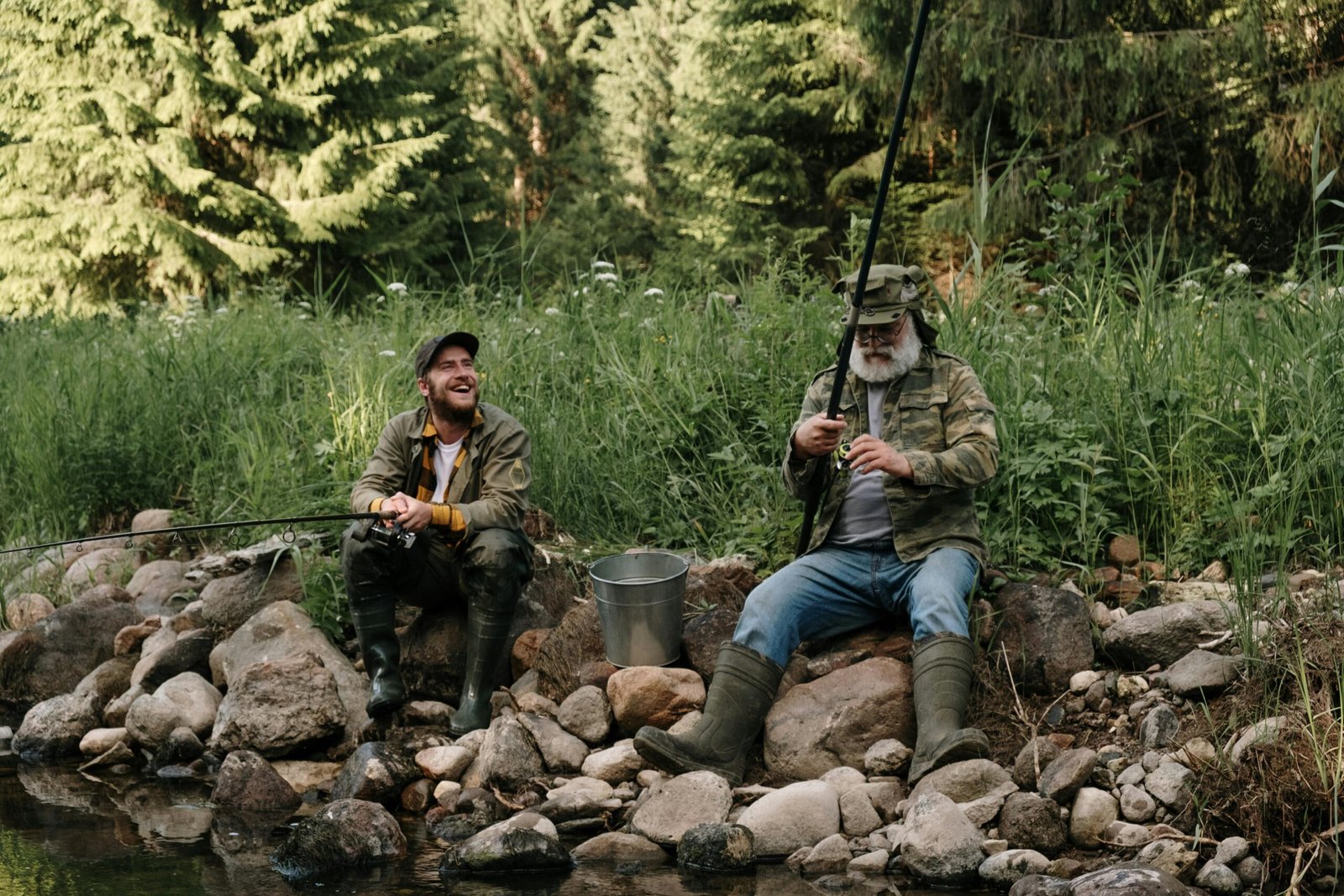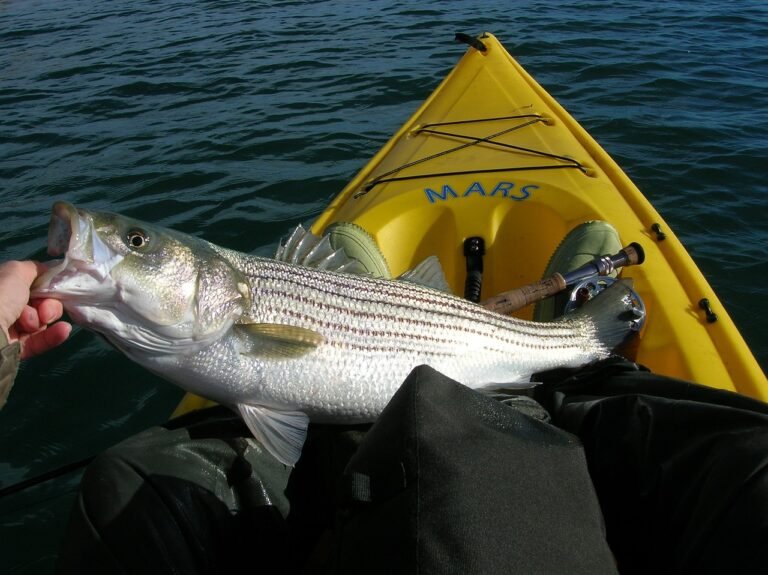When comparing fly rods and casting rods for trout fishing, it’s essential to understand their differences and how they impact your trout fishing experience. Here’s a breakdown of both types of rods and their suitability for trout fishing:
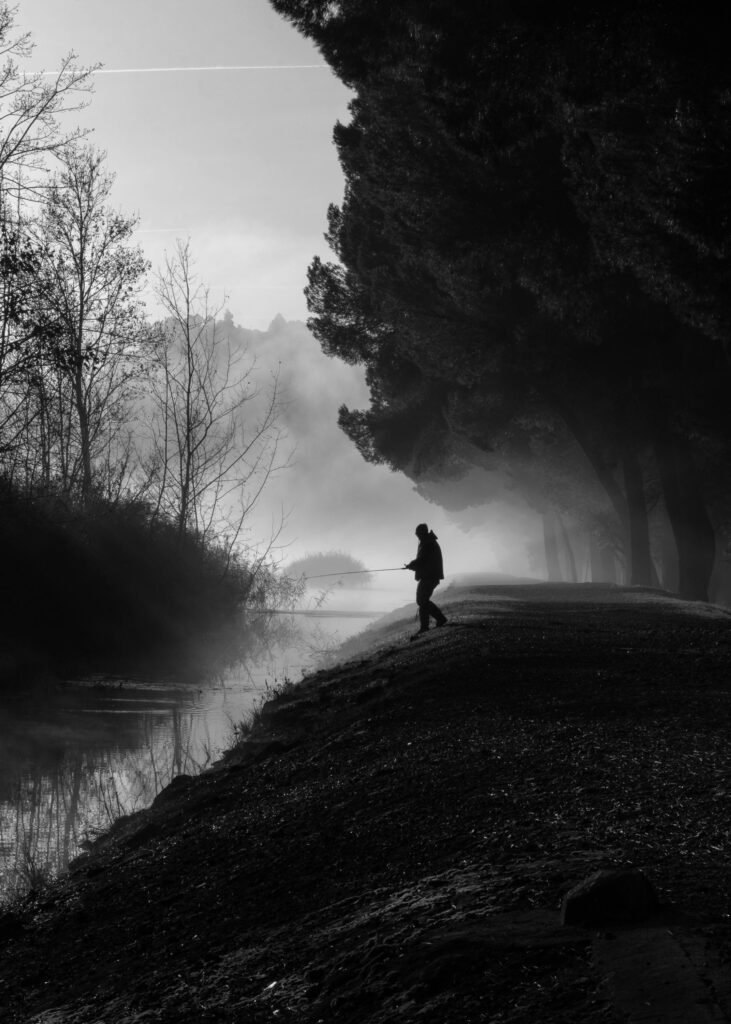
Table of Contents
- The Basics, The 2 Rods
- Bait Used For Each Type
- Understanding the trout environment, and feeding habits
- Impact of Environments and Surroundings:
- Difficulties of each type of rod
- Pricing
- Which is Better for Trout Fishing? Conclusion!
The Basics, The 2 Rods
Fly Rods:
- Design: Fly rods are specifically designed for fly fishing, where the weight of the line carries the lightweight fly to the target. They are typically longer and more flexible compared to casting rods. They are an excellent rod for trout fishing, and preferred by many anglers.
- Casting Technique: Fly casting involves a unique technique where the angler uses the weight of the fly line to cast the fly. The fly rod’s flexibility allows for delicate presentations and precise casting accuracy, essential for targeting trout in various water conditions.
- Line Control: Fly rods provide excellent line control, crucial for managing the drift of the fly on the water’s surface and achieving natural presentations. This control is advantageous when targeting trout in streams, rivers, and other freshwater habitats.
- Fly Types: Fly rods are optimized for casting lightweight flies commonly used in trout fishing, including dry flies, nymphs, and streamers. The casting action of the rod facilitates different casting techniques required for presenting these flies effectively.
- Versatility: While primarily used for fly fishing, fly rods can also handle other fishing techniques with appropriate modifications, such as using weighted nymphs or streamers.
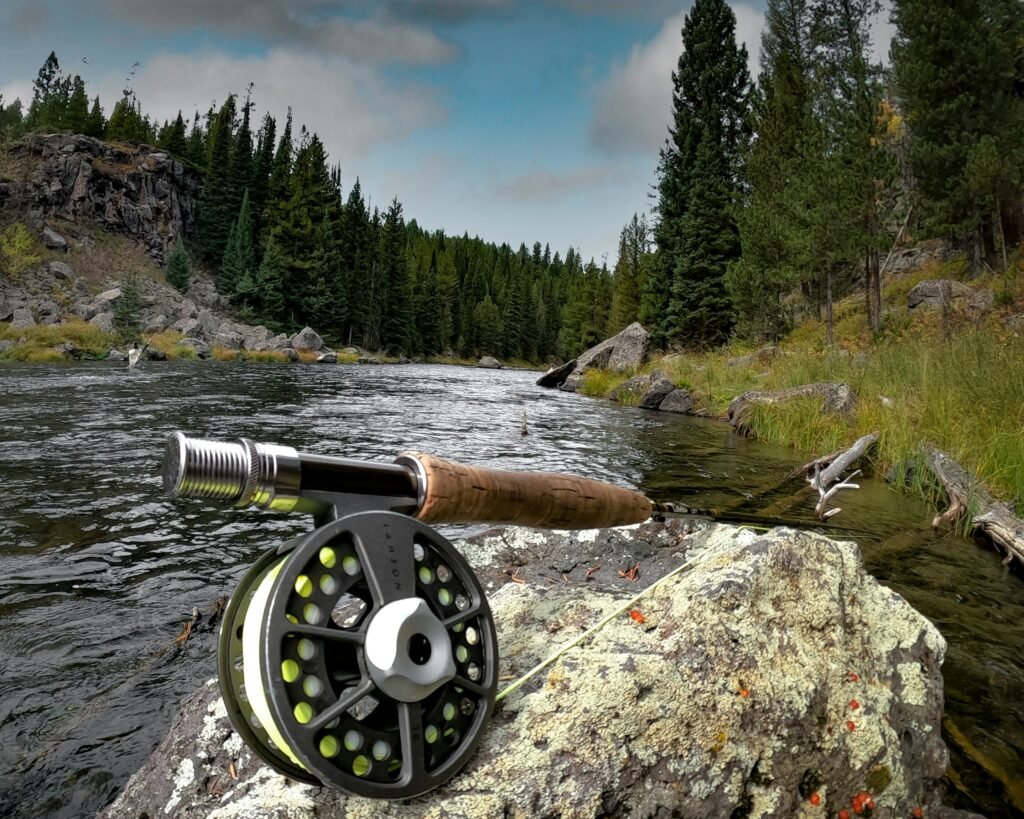
Casting Rods:
- Design: Casting rods, also known as spinning or baitcasting rods, are designed for conventional fishing methods where the weight of the lure or bait is used to cast the line. They are typically shorter and stiffer compared to fly rods. They are excellent for trout fishing in areas where using a fly rod would otherwise be difficult. Such as fast running streams, or areas with a lot of overhead cover.
- Casting Technique: Casting rods employ traditional casting techniques involving spinning or baitcasting reels. Anglers use the rod’s stiffness to propel lures or baits to the desired location.
- Line Control: While casting rods offer decent line control, especially with spinning reels, it may not be as precise as fly rods, particularly for delicate presentations common in trout fishing.
- Lure Types: Casting rods are suitable for casting a wide range of lures, including spinners, spoons, plugs, and bait rigs. They are versatile tools for various fishing styles and can be effective for targeting when trout fishing in different environments.
- Ease of Use: Casting rods are generally easier to learn for beginners due to their straightforward casting techniques and setup, making them a preferred choice for novice anglers.
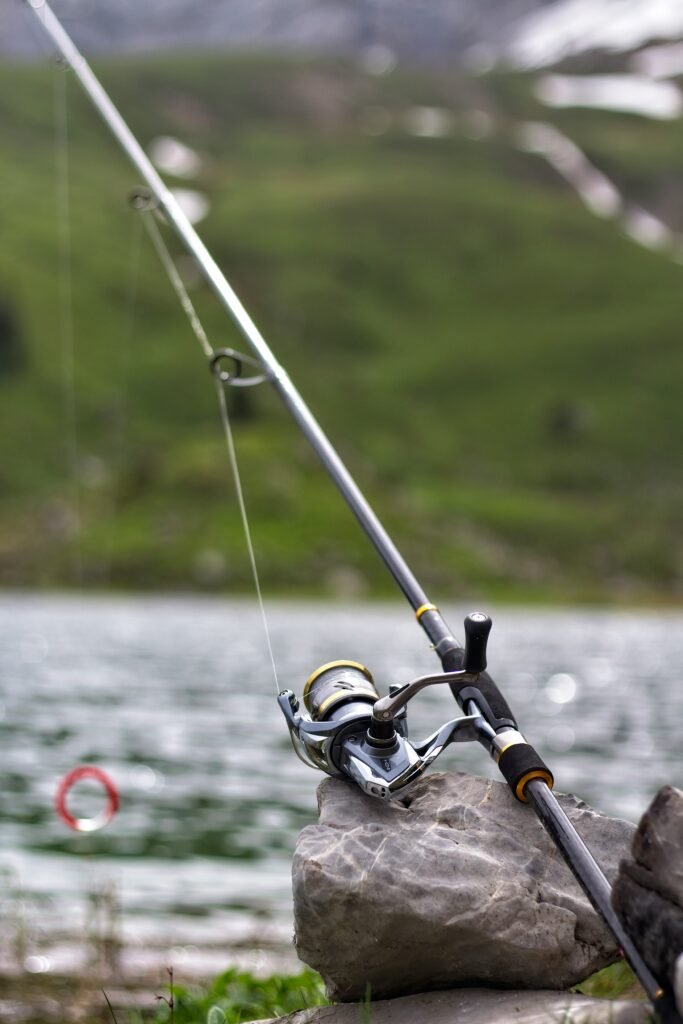
Bait Used For Each Type
When it comes to trout fishing, anglers have a variety of bait options to choose from, depending on factors such as the fishing environment, trout species, and angler preferences. Here’s a breakdown of common bait types used for both fly fishing and conventional fishing with casting rods:
Fly rods:
- Dry Flies: These are lightweight artificial flies that float on the water’s surface, imitating insects like mayflies, caddisflies, or stoneflies. Dry flies are commonly used for targeting trout that are feeding on the surface.
- Nymphs: Nymphs are subsurface flies that imitate aquatic insect larvae, such as mayfly nymphs, caddisfly larvae, or midge larvae. They are typically fished below the water’s surface and are effective for trout feeding below the surface.
- Streamers: Streamers are larger, more substantial flies that imitate baitfish, crayfish, or other small aquatic creatures. They are often used for aggressive trout species or in fast-moving water where trout are more likely to chase down prey.
- Wet Flies: Wet flies are versatile flies that can imitate a variety of aquatic insects, baitfish, or other food sources. They can be fished at various depths and are effective for trout feeding below the surface or in moving water.
- Terrestrial Patterns: These are flies that imitate land-dwelling insects such as grasshoppers, ants, or beetles. Terrestrial patterns are effective during the warmer months when these insects are abundant near water.
Casting rods:
- Live Bait: Live bait options for trout fishing include worms, minnows, crickets, and other small aquatic creatures. Live bait can be rigged on hooks or used with bait rigs such as Carolina rigs or slip bobber setups.
- Artificial Lures: Artificial lures come in various types and styles, including spinners, spoons, plugs, jigs, and soft plastics. These lures can mimic baitfish, insects, or other trout prey and are retrieved through the water to entice strikes.
- PowerBait or Dough Baits: PowerBait and similar dough baits are synthetic baits designed to resemble natural trout food sources such as salmon eggs or trout pellets. They are often molded onto hooks or used with bait rigs and are particularly popular for stocked trout fisheries.
- Salmon Eggs: Salmon eggs, also known as spawn sacs or egg imitations, are effective trout bait, especially in rivers and streams during spawning seasons. They can be used alone or combined with other baits for added attraction.
- Corn: Canned corn kernels are a popular bait choice for trout, particularly in lakes and ponds. Corn can be threaded onto hooks or used with bait rigs and is especially effective for attracting stocked trout. Not legal everywhere. an angler should check the regulations where they are trout fishing.
Regardless of whether you’re using a fly rod or casting rod for trout fishing, selecting the right bait for the fishing conditions and trout behavior is essential for success. Experimenting with different bait types and presentations can help you determine what works best in your local fishing waters.
Understanding the trout environment, and feeding habits
Trout fishing experiences can vary significantly depending on whether you’re fishing in lakes, streams, or rivers, as each type of water body presents unique challenges and opportunities. Additionally, the natural bait found in these environments and the surrounding conditions can influence trout behavior and fishing success. Let’s explore how these factors differ:
1. Lakes: Trout Fishing
- Environment: Lakes offer vast expanses of still or slow-moving water, with varying depths and structures such as drop-offs, weed beds, and submerged structures. The environment can range from shallow, weedy areas near the shoreline to deeper, open water in the middle of the lake.
- Trout Behavior: In lakes, trout often roam in search of food, cruising along drop-offs, weed edges, and other underwater structures. They may also suspend at different depths depending on water temperature, oxygen levels, and food availability.
- Natural Bait: Common natural bait found in lakes includes aquatic insects, crustaceans, small fish, and terrestrial insects that fall into the water. Additionally, lakes may have populations of baitfish such as minnows, shad, or sculpins that trout prey upon.
- Fishing Tactics: Anglers trout fishing in lakes often use a variety of techniques, including trolling with lures or bait, casting from shore or a boat, and still fishing with bait rigs or float setups. Effective bait options include live bait such as worms, minnows, or insects, as well as artificial lures that mimic baitfish or other trout prey.
2. Streams: Trout Fishing
- Environment: Streams are characterized by flowing water, rocky bottoms, riffles, pools, and runs. They can vary in size from small, narrow creeks to larger, meandering rivers with deeper pools and undercut banks.
- Trout Behavior: Trout in streams are highly adapted to the current and often hold in areas with cover, such as boulders, fallen trees, undercut banks, and riffles where food is abundant. They may also seek refuge in deeper pools during periods of high flow or warmer temperatures.
- Natural Bait: Streams are rich in aquatic insect life, including mayflies, caddisflies, stoneflies, and midges, which are primary food sources for trout. Other natural bait found in streams may include terrestrial insects such as ants, beetles, and grasshoppers that fall into the water.
- Fishing Tactics: Stream fishing often involves techniques such as drift fishing with nymphs or dry flies, casting into riffles and runs, and presenting bait or lures in pools and eddies. Effective bait options include imitation flies, live bait such as worms or insects, and artificial lures that mimic natural trout prey.
3. Rivers: Trout Fishing
- Environment: Rivers are characterized by flowing water, varying depths, currents, and a mix of habitats such as riffles, runs, pools, and deep holes. They can range from small, mountain streams to large, wide rivers with powerful currents.
- Trout Behavior: Trout in rivers exhibit similar behavior to those in streams, seeking cover in areas with structure and current breaks while actively feeding in riffles and runs. They may also migrate between different habitats in response to seasonal changes and spawning requirements.
- Natural Bait: Rivers support a diverse array of aquatic insects, baitfish, and other food sources for trout. Common natural bait found in rivers includes mayflies, caddisflies, stoneflies, baitfish, crayfish, and terrestrial insects that fall into the water.
- Fishing Tactics: Fishing in rivers requires adapting to changing water conditions and current speeds. Techniques such as drift fishing with nymphs or streamers, swinging wet flies across currents, and presenting bait or lures in prime feeding lies are commonly used. Effective bait options include imitation flies, live bait such as worms or minnows, and artificial lures designed for river fishing.
Impact of Environments and Surroundings:
- Water Temperature and Oxygen Levels: Trout are cold-water species that thrive in well-oxygenated environments. Water temperature and oxygen levels influence trout behavior and feeding activity, with cooler, oxygen-rich water typically supporting more active feeding.
- Food Availability: The availability of natural bait, including aquatic insects, baitfish, and terrestrial insects, varies depending on the environment and surrounding habitat. Understanding the local food sources and trout feeding preferences can help anglers choose the most effective bait and fishing tactics.
- Cover and Structure: Trout are ambush predators that rely on cover and structure to conceal themselves from predators and ambush prey. The presence of rocks, logs, undercut banks, weed beds, and other forms of cover can provide habitat for trout and influence their behavior and feeding patterns.
- Water Flow and Currents: Flowing water in streams and rivers creates diverse habitats and currents that influence trout behavior and feeding activity. Understanding how trout position themselves in relation to currents and eddies can help anglers target productive fishing spots.
- Seasonal Patterns: Trout behavior and feeding patterns can vary seasonally in response to factors such as water temperature, insect hatches, spawning activity, and environmental changes. Anglers should adjust their fishing tactics and bait selection based on seasonal patterns and local conditions.
In conclusion, trout fishing experiences are shaped by the unique characteristics of lakes, streams, and rivers, as well as the surrounding environments and natural bait found in these habitats. By understanding the differences between these environments and adapting fishing tactics accordingly, anglers can enhance their chances of success and enjoy rewarding trout fishing adventures.
Difficulties of each type of rod
The surroundings of a body of water can significantly impact the difficulty of using either type of rod, whether it’s a fly rod or a casting rod, for trout fishing. Here’s how the surroundings can affect the difficulty of trout fishing with each type of rod:
Fly Rod:
- Vegetation: Fly fishing in areas with dense vegetation along the shoreline or overhanging trees can be challenging. Limited casting space and obstacles such as branches or foliage can make it difficult to execute fly casts accurately and efficiently.
- Limited Backcasting Room: Fly casting requires sufficient space behind the angler to perform backcasts and false casts. In environments with restricted backcasting room, such as narrow streams or overgrown banks, anglers may struggle to cast effectively without snagging vegetation or obstacles.
- Wind: Windy conditions can pose challenges for fly casting, affecting the accuracy and distance of casts. Strong gusts can make it difficult to maintain control of the fly line and achieve precise presentations, especially when casting into the wind or dealing with crosswinds.
- Surface Obstructions: Trout in streams or rivers often hold near structure or cover such as rocks, logs, or undercut banks. Casting flies to these tight spaces without snagging on obstructions requires precise casting accuracy and line control, adding to the difficulty of fly fishing in certain surroundings.
Casting Rod:
- Limited Casting Space: Using a casting rod in areas with limited casting space, such as narrow streams or overgrown banks, can be challenging. Anglers may struggle to maneuver longer casting rods or execute overhead casts without snagging vegetation or obstacles.
- Overhanging Cover: Fishing with casting rods in areas with overhanging cover, such as trees or brush along the shoreline, can impede casting and retrieval. Anglers may need to adjust their casting angles or use shorter casting strokes to avoid snagging on obstructions.
- Structure and Currents: Casting into areas with underwater structure or strong currents, such as riffles or eddies in streams or rivers, requires precise casting accuracy and line control. Anglers may need to use specialized casting techniques or heavier lures to effectively target trout holding in these environments.
- Wind: Windy conditions can affect casting accuracy and distance when using casting rods, particularly when casting lightweight lures or bait. Anglers may need to adjust their casting technique or position themselves to minimize the impact of the wind on their casts. When using live bait for trout fishing the wind can make it difficult to sense the delicate hit of the trout.
- Depth and Bottom Structure: Fishing with casting rods in areas with varying depths and bottom structure, such as drop-offs, weed beds, or rocky shoals, requires adjusting casting depth and retrieval speed to effectively target trout holding in different parts of the water column.
In summary, the surroundings of a body of water can present unique challenges for both fly fishing and conventional fishing with casting rods. Anglers must adapt their casting techniques, tackle selection, and fishing strategies to overcome these challenges and maximize their chances of success when targeting trout in different environments. Practice, patience, and knowledge of local conditions are essential for navigating the complexities of trout fishing in diverse surroundings.
Pricing
The pricing of fly rods and casting rods can vary based on several factors, including brand, materials, craftsmanship, and features. Here’s a general overview of the differences in pricing between the two types of rods:

Fly Rods:
- Materials: Fly rods are often constructed using materials such as graphite, fiberglass, or a combination of both. Higher-end fly rods may utilize advanced materials or construction techniques, such as carbon fiber, which can increase the cost.
- Craftsmanship: The quality of craftsmanship plays a significant role in the price of fly rods. Premium fly rods are typically handcrafted or feature advanced manufacturing processes, resulting in higher prices.
- Brand: Well-known fly rod brands with a reputation for quality and performance often command higher prices compared to lesser-known brands or budget options.
- Features: Fly rods may come with additional features such as improved reel seats, advanced rod guides, and specialized rod actions designed for specific fishing techniques, all of which can impact the overall price.
- Length and Weight: Longer or shorter fly rods, as well as rods designed for specific line weights, may vary in price depending on the materials and features used in their construction.
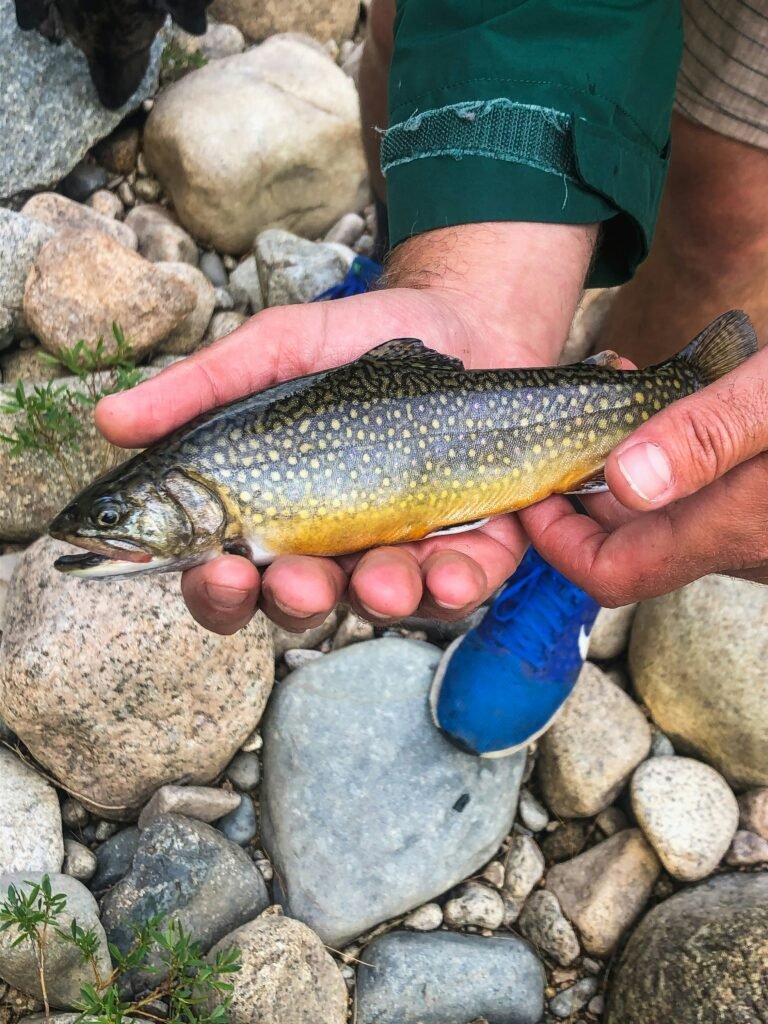
Casting Rods:
- Materials: Casting rods are commonly made from materials like graphite or fiberglass, with higher-priced rods often incorporating advanced materials or construction techniques for enhanced performance.
- Craftsmanship: Similar to fly rods, the craftsmanship and manufacturing processes used in casting rod production can affect pricing. Higher-end casting rods may feature handcrafted construction or specialized components.
- Brand: Established casting rod brands with a reputation for quality and innovation typically offer higher-priced models compared to lesser-known brands.
- Features: Casting rods may include features such as ergonomic grips, improved reel seats, and specialized rod actions tailored to specific fishing techniques. These features can contribute to higher prices for premium models.
- Specialization: Some casting rods are designed for specific fishing techniques, such as bass fishing or saltwater fishing, and may command higher prices due to their specialized features and construction.
Price Comparison:
In general, fly rods tend to have a broader price range compared to casting rods, with entry-level fly rods typically starting at a lower price point than entry-level casting rods. However, high-end fly rods can be significantly more expensive than their casting rod counterparts due to the craftsmanship, materials, and features involved.
Ultimately, the pricing of both fly rods and casting rods can vary widely depending on factors such as brand reputation, materials, craftsmanship, and features. Anglers should consider their budget, fishing preferences, and intended use when selecting a rod within their price range.
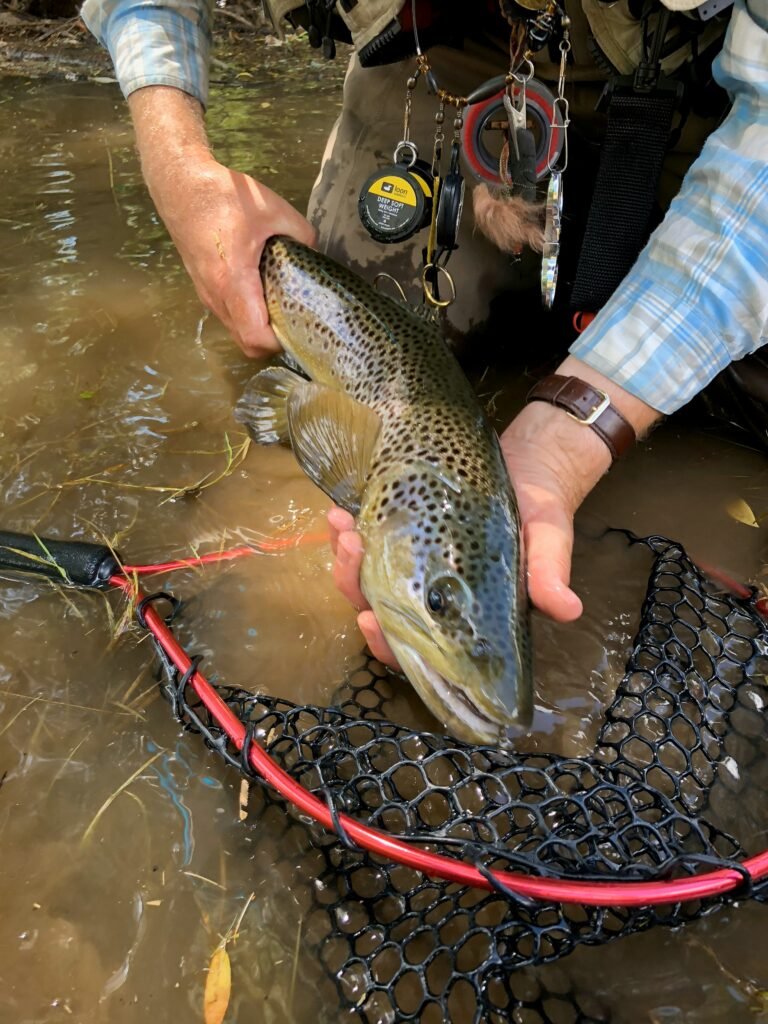
Which is Better for Trout Fishing? Conclusion!
The choice between a fly rod and a casting rod for trout fishing ultimately depends on personal preference, fishing style, and the specific fishing environment:
- Fly Rods: Ideal for anglers who prefer finesse casting techniques, precision presentations, and fishing in streams or rivers where delicate fly presentations are crucial for success.
- Casting Rods: Suitable for anglers who prefer versatility, ease of use, and fishing with a variety of lures in different water conditions, including lakes, ponds, and larger rivers.
In conclusion, both fly rods and casting rods have their advantages and are effective tools for trout fishing. Anglers should consider their fishing preferences and the specific conditions they’ll encounter to determine which type of rod best suits their needs.
Leave a comment, or request a subject for my next post. https://www.americanwildoutdoors.com/contact
A bad day of fishing will always be better than a good day at work. Get your license today. https://www.fws.gov/initiative/fishing/purchase-fishing-license

